Stoo Batchelor
Member
Appologies Dave, for the lateness of posting this.
Dave, the simple answer to this question, IMHO, is yes.
I recently had some bad negatives come from a batch of Prescysol EF developed negatives. It was because of this that I decided to look for an alternative. By doing this, any future problems I have would be down to me, not that I am blaming the Prescysol for the bad negatives mind.
I had alot of good advice from Leon Taylor, pestering him for info (cheers Leon) I sauced the chemicals from Retro photographic and purchased some very acurate scales.
I used two test films, Delta 100 120, shot solely for this test, and HP5 120, which was shot mainly to test the Ilford sporti 6 it was loaded in, and hopefully to get some images for my antique camera collection portfolio I am working on.
The important part of the test, to me anyway, was to treat the Pyrocat-HD exactly as I would the Prescysol, which is:
To develop both Delta 100 and Ilford HP5 in the same tank.
Develop @ 24 degrees
Pre-soak for 3 minutes approx
Partial stand method of agitation
water stop bath
Ilford Fix
3 x 5 minute stand in water followed by Ilford wash method.
3 minute soak in R.O water and wet agent and hung to dry.
The comparison is between Pyricat-HD and the EF version of Prescysol
Mixing the chems
This was very straight forward and I made a few notes as I went along. The main thing that I noted was the smell when mixing part 'A' this was far stronger than Prescysol, resembling Di-Xactol, which I loved the smell of. The colour also was different, as Prescysol is a straw colour and the Pyrocat-HD is clear, though showing a slight pinkness, which I put down to the tub I mixed it in, an old Xmas Pud bowl made of plastic.
The negatives
I did a bit of maths, of which I am crap at, and taking in to account that Leon develops at 21 degrees for 14 to 15 mins, I used the Ilford temperature conversion chart to work out my development time at 24 degrees. I wanted to stay as near the Prescysol development time of 10.5 mins, so I settled for 11 minutes.
I was so glad to see something on the negatives after removing the films from the tank(phew) in fact, a nice sense of achievment came over me. After drying, both sets of negatives looked good. The stain was the light chocolate brown that my old Di-Xactol negatives used to have, far superior than the Prescysol stain, and I could see that there was detail in all the right places.
Printing
I printed from the Delta negatives first. (atach; Gerbera 1 and Gerbera 2) The first thing I noticed was that the grain was easier to focus than that of a Prescysol EF negative, suggesting to me that it was larger, though it still looked very crisp and tight, and, correct me if I am wrong, grain = sharpness. Both prints were printed at grade 2 and didnt need any manipulation. I feel this would also have been achievable with a Prescysol negative, but mine used to print nicely at grade 2 1/2. The final prints were printed at 8 x 6 and 6 x 6 inch and are absolutely beautiful to look at, displaying lovely smooth tones and zero, and I mean zero, grain. The HP5 negatives grain, though slightly larger under the magnifier, was still very neat. I could see the stain between the grains of silver, which resembled the old Delta 100 Di-Xactol negatives, (which I used to find too grainy) but still looked good.The print of the bottles was a straight print made from the HP5 negatives. Now considering that the negative was made in an old Ilford Sporti 6, so no metering from any shadows etc here! WoW! The Pyrocat-HD has handled this superbly well, rendering detail in the deepest shadow to the brightest highlight. I really do think that the Presysol would have struggled with this one, espescially with the light falling on the ledge between the bottles. And no visible grain either, quite astonishing, though it is only a 6 x 6 inch print. The last two prints, Two leaves, and the landscape, both printed at grade 2 1/2 nicely, again, grainless and great detail in both shadow and highlight. The landscape (yes, I know I won't win prizes with it) though it didn't need it, I gave a 1 stop burn to the sky.
To sum up
Though my findings are not scientific, they proved to me that I could use the Pyrocat-HD as I did the Prescysol EF, @ 1-1-100, It allowed me to develop at box speed, two films of different characteristics, exposed in different stuations, with little, or I would say, no loss of quality to the negative, and certainly not the final print. I would say that the Pyrocat-HD negatives give about 1/2 grade more contrast than the Prescysol, but I do not wish to comment on the grain in the final print untill i print a landscape made on a Delta 100 negative in my Pentax 645. The grain structure in the sky area will tell me all that I wish to know. I developed two more films today, both look good, and I will post the final print made from these negatives, a landscape, in the gallery next weekend.
I hope this helps.
Regards
Stoo
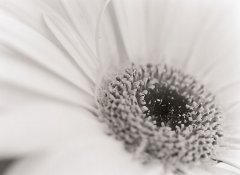
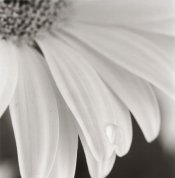
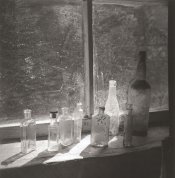
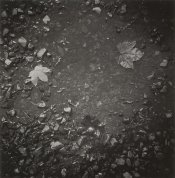
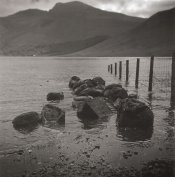
Dave Miller Just a further thought. If Prescysol is the same or similar to Pyrocat-HD then the user method of that product should presumabaly apply to Prescysol. Any input on this Sandy?
Dave, the simple answer to this question, IMHO, is yes.
I recently had some bad negatives come from a batch of Prescysol EF developed negatives. It was because of this that I decided to look for an alternative. By doing this, any future problems I have would be down to me, not that I am blaming the Prescysol for the bad negatives mind.
I had alot of good advice from Leon Taylor, pestering him for info (cheers Leon) I sauced the chemicals from Retro photographic and purchased some very acurate scales.
I used two test films, Delta 100 120, shot solely for this test, and HP5 120, which was shot mainly to test the Ilford sporti 6 it was loaded in, and hopefully to get some images for my antique camera collection portfolio I am working on.
The important part of the test, to me anyway, was to treat the Pyrocat-HD exactly as I would the Prescysol, which is:
To develop both Delta 100 and Ilford HP5 in the same tank.
Develop @ 24 degrees
Pre-soak for 3 minutes approx
Partial stand method of agitation
water stop bath
Ilford Fix
3 x 5 minute stand in water followed by Ilford wash method.
3 minute soak in R.O water and wet agent and hung to dry.
The comparison is between Pyricat-HD and the EF version of Prescysol
Mixing the chems
This was very straight forward and I made a few notes as I went along. The main thing that I noted was the smell when mixing part 'A' this was far stronger than Prescysol, resembling Di-Xactol, which I loved the smell of. The colour also was different, as Prescysol is a straw colour and the Pyrocat-HD is clear, though showing a slight pinkness, which I put down to the tub I mixed it in, an old Xmas Pud bowl made of plastic.
The negatives
I did a bit of maths, of which I am crap at, and taking in to account that Leon develops at 21 degrees for 14 to 15 mins, I used the Ilford temperature conversion chart to work out my development time at 24 degrees. I wanted to stay as near the Prescysol development time of 10.5 mins, so I settled for 11 minutes.
I was so glad to see something on the negatives after removing the films from the tank(phew) in fact, a nice sense of achievment came over me. After drying, both sets of negatives looked good. The stain was the light chocolate brown that my old Di-Xactol negatives used to have, far superior than the Prescysol stain, and I could see that there was detail in all the right places.
Printing
I printed from the Delta negatives first. (atach; Gerbera 1 and Gerbera 2) The first thing I noticed was that the grain was easier to focus than that of a Prescysol EF negative, suggesting to me that it was larger, though it still looked very crisp and tight, and, correct me if I am wrong, grain = sharpness. Both prints were printed at grade 2 and didnt need any manipulation. I feel this would also have been achievable with a Prescysol negative, but mine used to print nicely at grade 2 1/2. The final prints were printed at 8 x 6 and 6 x 6 inch and are absolutely beautiful to look at, displaying lovely smooth tones and zero, and I mean zero, grain. The HP5 negatives grain, though slightly larger under the magnifier, was still very neat. I could see the stain between the grains of silver, which resembled the old Delta 100 Di-Xactol negatives, (which I used to find too grainy) but still looked good.The print of the bottles was a straight print made from the HP5 negatives. Now considering that the negative was made in an old Ilford Sporti 6, so no metering from any shadows etc here! WoW! The Pyrocat-HD has handled this superbly well, rendering detail in the deepest shadow to the brightest highlight. I really do think that the Presysol would have struggled with this one, espescially with the light falling on the ledge between the bottles. And no visible grain either, quite astonishing, though it is only a 6 x 6 inch print. The last two prints, Two leaves, and the landscape, both printed at grade 2 1/2 nicely, again, grainless and great detail in both shadow and highlight. The landscape (yes, I know I won't win prizes with it) though it didn't need it, I gave a 1 stop burn to the sky.
To sum up
Though my findings are not scientific, they proved to me that I could use the Pyrocat-HD as I did the Prescysol EF, @ 1-1-100, It allowed me to develop at box speed, two films of different characteristics, exposed in different stuations, with little, or I would say, no loss of quality to the negative, and certainly not the final print. I would say that the Pyrocat-HD negatives give about 1/2 grade more contrast than the Prescysol, but I do not wish to comment on the grain in the final print untill i print a landscape made on a Delta 100 negative in my Pentax 645. The grain structure in the sky area will tell me all that I wish to know. I developed two more films today, both look good, and I will post the final print made from these negatives, a landscape, in the gallery next weekend.
I hope this helps.
Regards
Stoo





Last edited by a moderator:












